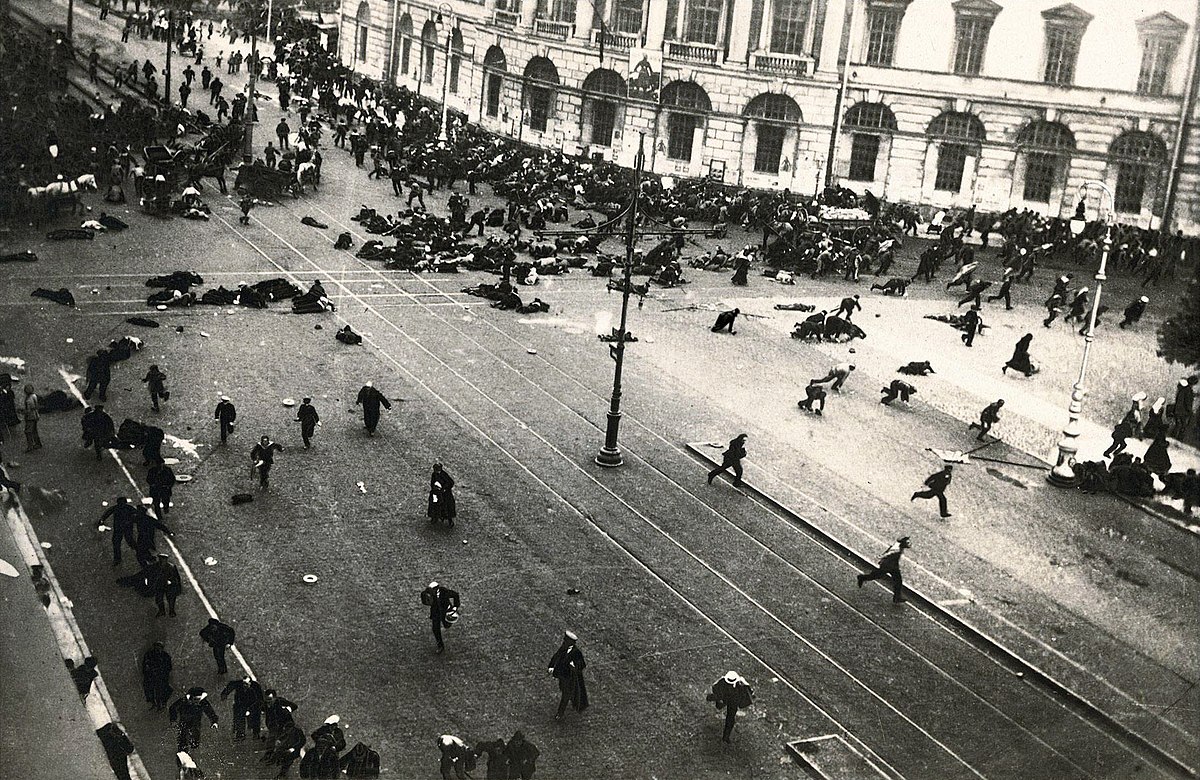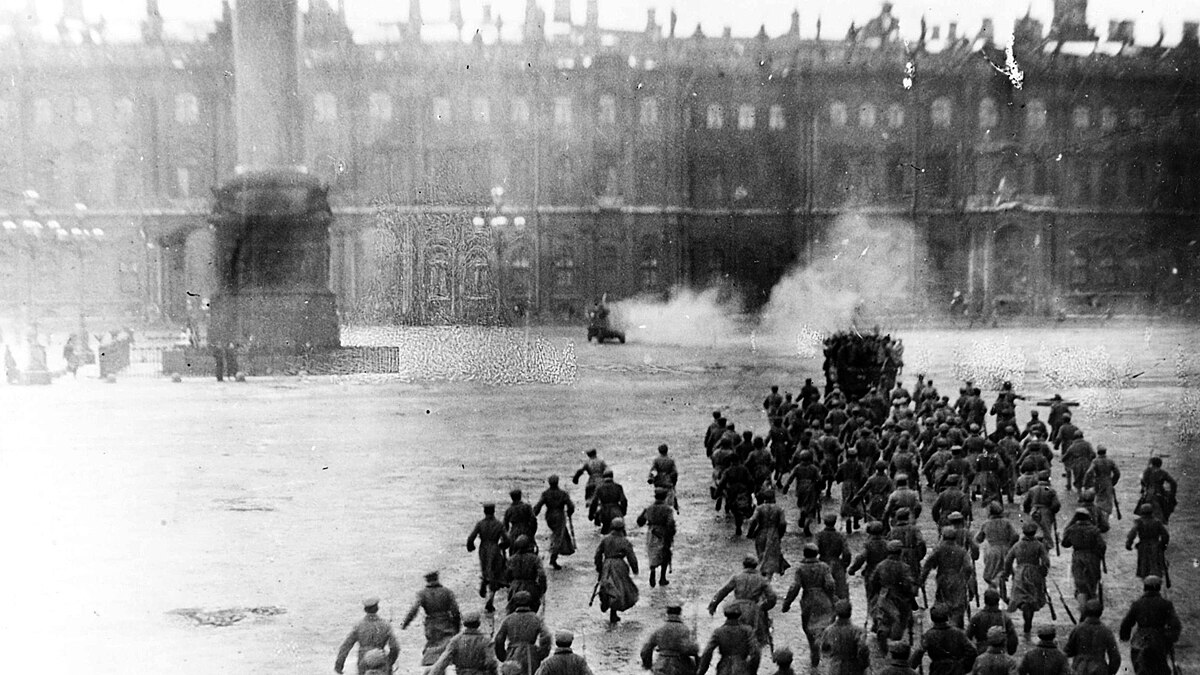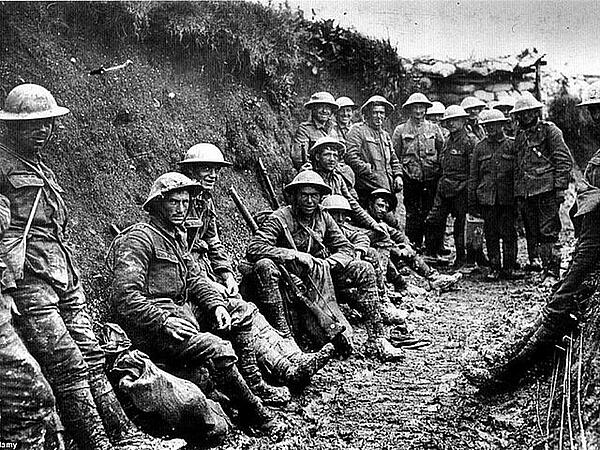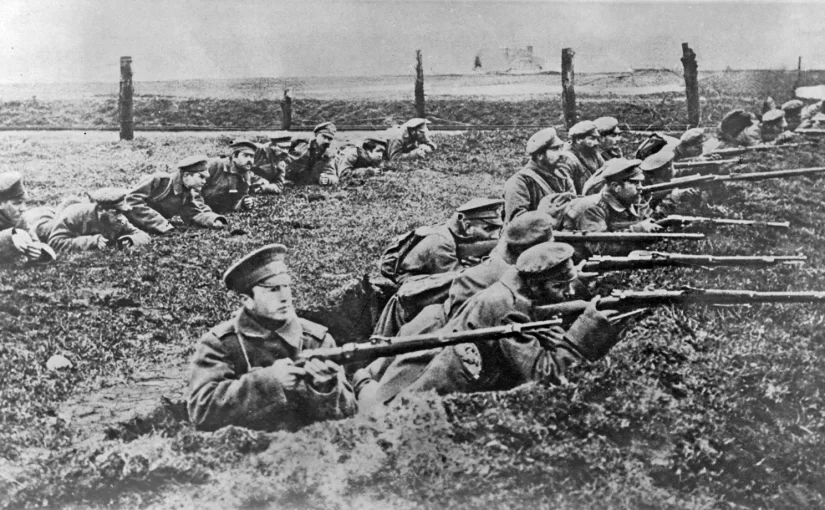Lenin had set up a dictatorship, but was still enacting many of his socialist policies, like giving the poor land and food. However, he had still not gotten them out of the war so began to negotiate with the Germans, with Trotsky as the middle man. Germany demanded a large chunk of territory that, if lost, would cripple the Russian Economy. Lenin called this an insult to Russia, so Trotsky thought of a new idea. If they simply stopped fighting then the Germans would see that they wanted to just stop and not fight anymore. Obviously, this plan failed and Germany advanced thousands of more troops into their territory. When peace was offered again, they demanded even more land. The Soviets had to accept.
Being in a more exposed position, the capital was moved from Petrograd to Moscow. Lenin then established the Communist International or Comintern, an effort to expand communism in other countries. However, many non-Bolshevik groups were not a fan of the Bolshevik Policies, and formed the White Army, thrusting Russia into a civil war. The two main factions were the Red Army, made up of the Bolsheviks and their militias, and the White Army who was made up of basically everyone else, mainly the regions controlled by the Russian Empire, like Poland, Ukraine, Finland and Belarus, or the anti-Bolsheviks, like the more moderate Socialists, the Monarchists and the Republicans.
Due to a lack of coordination inside the White Army and the Red Army controlling the industrial heartland, the Red Army made quick progress. However, the Tsar, who was being kept in Ipatiev House this entire time, was a concern of the Bolsheviks. They believed that if the White Army captured the Tsar, they could reestablish the monarchy they fought so hard to abolish.
At around midnight on July 17th, 1918, the Romanovs were woken up and got told they were moving to a safe location due to the war. Believing Nicholas’ cousin, King George V of Britain, had come to rescue them, they excitedly got dressed. The Romanovs were told to go into the basement and stand against the wall, under the pretext of a photograph being taken to assure that they were safe and well. The group was as follows.
- Nicholas II, former Tsar of Russia
- Alexandra Feodorovna, the former Princess of the Rhine and Tsarina of Russia
- Their 5 children, Olga, Anastasia, Alexsei, Maria and Tatiana
- Court Physician Eugene Botkin
- Lady-in-waiting Anna Demidova
- Footman Alexei Trupp
- Head Cook Ivan Kharitonov
Then, a group of slightly drunk executioners entered the room. The leader pulled out a Colt M1911, and fired three shots at Nicholas, who fell to the floor dead. The rest of the Royal Family and the entourage were shot dead against the wall. The loud gunfire alerted others around the large house. Due to the smoke, the firing was ceased, only to find that the children were still alive, with Tatiana only being injured. They were then ordered to bayonet the children. This proved to be highly ineffective.
Alexsei, who was still in shock in his seat was shot point blank in the head. Tatiana and Olga were both shot in the head too. Maria, cowering in the corner was also killed. Anna, who survived the initial attack, was stabbed to death against the wall. The last to die was Anastasia, who cried out as the bodies were being taken away. She was hit with the butt of a rifle in her chest before being shot in the head with a revolver. The bodies were then carried out to the woods where there were put in a mass grave, covered in acid and buried. The bodies were not discovered until the 1970s and only identified in the 1990s. Boris Yeltsin, future President of Russia ordered the demolition of the house. It is unknown if they were acting on Lenin’s orders or their own.

The allied powers, wanting to not spread the ideas of Communism, sent their own troops to assist the White Army. However, with the end of WW1, the map of Europe was redrawn, and many states that the Russian Empire used to own became their own countries. Russia recognised the independence of the Baltics but the southern state of Georgia, a key point of the White Army due to its oil fields was attacking the Red Army. Lenin made a deal with one of the minor factions in the war, the Black Army and an alliance was formed. Eventually, they crushed the Southern and Western front, bringing more nations into the newly formed Union of Soviet Socialist Republics or, as it’s more commonly known, the Soviet Union by 1922.












